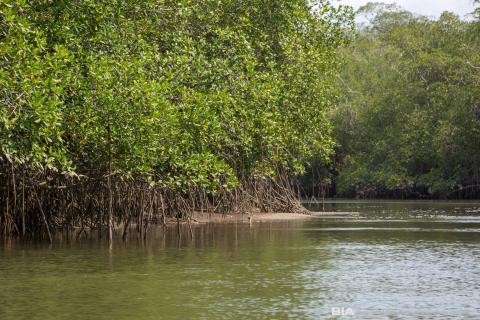Mangroves
Mangroves are a special type of permanent coastal wetland characterized by a vegetation cover dominated by salinity-tolerant species. They develop in brackish areas between marine and freshwater environments, typically associated with river mouths. On the Caribbean coast of Colombia, the distribution of mangroves is discontinuous, while in the Pacific they tend to be more continuous and extensive due to high levels of precipitation.
In Colombia, mangroves are mostly composed of eight species of mangroves, which form complex structures that harbor a great diversity of organisms. These ecosystems play a fundamental role in coastal protection against erosion, in the breeding of commercially valuable marine species, and in the provision of construction materials. They are also vital for the food security of local communities, which have extensive knowledge of their biology and ecology.
In Colombia, mangroves occupy approximately 0.7% of the continental territory, with significant levels of transformation. In the National System of Protected Areas (Sinap), they have a representation of 23.6%, although 8.8% of these protected mangroves show levels of transformation.
Source: Evaluación nacional de biodiversidad y servicios ecosistémicos de Colombia

